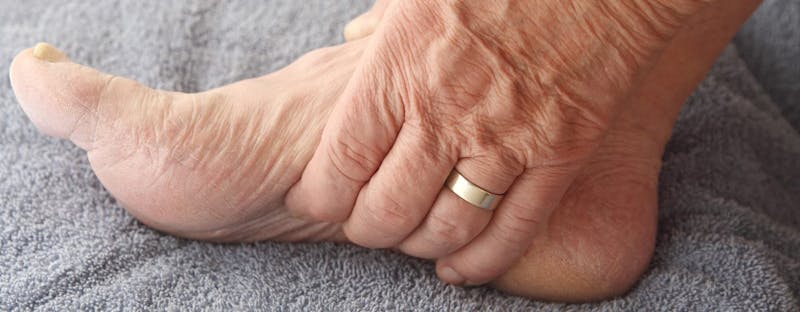Schedule a Consultation
Contact Us


Occurring between the skin and the first layers of muscle in the arch of the foot, plantar fibroma is a knot, or nodule, that is sometimes embedded in a thick band of tissues running from the heel to the base of the foot. This benign (non-cancerous), round or oval-shaped mass can affect the natural curvature of the foot and result in pain that’s felt when pressure is applied to the bottom of the foot where the mass is located.
What Causes Plantar Fibroma?
Plantar fibroma is an inherited (genetic) condition, although it’s not known why the specific genetic abnormality that causes it develops. The condition may also result from an injury to the fascia, the flat band of tissue connecting the heel bone to the toes in individuals who haven’t inherited it. Symptoms can vary depending on the size of the mass. Some people have it with little or no discomfort while others experience pain when pressure is placed on the affected foot.
Who Gets Plantar Fibroma?
Since plantar fibroma is largely genetic, those with a family history of the condition are most susceptible to it. Statistically, it tends to become problematic later in life and may be aggravated by inflammation from conditions such as diabetes that tend to affect feet. A puncture wound or tear in tissues within the arch of the foot may also cause a mass to form.
Diagnosis of Plantar Fibroma
X-rays and other image tests can confirm the presence of a mass along the arch of the foot. While there are other possible reasons for a mass to develop on the bottom of the foot, medical history can usually rule out other potential causes. An MRI usually provides a clearly identification of plantar fibroma. A biopsy isn’t usually necessary.
Plantar Fibroma Treatment
Treatment of plantar fibroma by a podiatrist may include observation of the mass and recommended changes in footwear or use of an off-loading insole to increase comfort and minimize pressure on the affected area of the foot. If these efforts fail to provide relief, surgery may be necessary to remove the fascia. Taking about 1-2 months, recovery involves resting the foot and minimizing pressure on it as it heals.
A podiatrist can determine if there is a serious structural issue with your foot that will need to be corrected surgically. Treatment is often conservative, or non-surgical, in nature and usually includes the use of specially designed footwear or orthotics to provide added support and minimize discomfort. Such treatments may reduce pain to the point where it’s manageable.